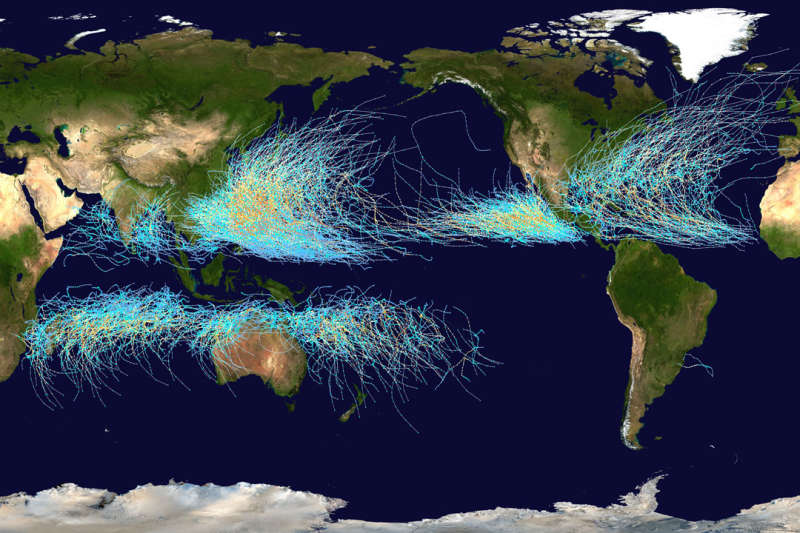
|
Explanation: Where on Earth do cyclones go? Known as hurricanes when in the Atlantic Ocean and typhoons when in the Pacific, the featured map shows the path of all major storms from 1985 through 2005. The map shows graphically that cyclones usually occur over water, which makes sense since evaporating warm water gives them energy. The map also shows that cyclones never cross -- and rarely approach -- the Earth's equator, since the Coriolis effect goes to zero there, and cyclones need the Coriolis force to circulate. The Coriolis force also causes cyclone paths to arc away from the equator. Although long-term trends remain a topic of research, evidence indicates that hurricanes have become, on the average, more powerful in the North Atlantic over the past 30 years, and their power is projected to keep increasing.
Follow APOD on Instagram in:
English,
Farsi,
Indonesian,
Persian, or
Portuguese
|
January February March April May June July August September October November December |
| ||||||||||||||||||||||||||||||||||||||||||||||||
NASA Web Site Statements, Warnings, and Disclaimers
NASA Official: Jay Norris. Specific rights apply.
A service of: LHEA at NASA / GSFC
& Michigan Tech. U.
Based on Astronomy Picture
Of the Day
Publications with keywords: Earth - storm
Publications with words: Earth - storm
See also:
- APOD: 2025 October 12 Á All the Water on Europa
- APOD: 2025 October 5 Á A Long Storm System on Saturn
- APOD: 2025 December 8 Á Flying Over the Earth at Night
- APOD: 2025 September 7 Á All the Water on Planet Earth
- APOD: 2025 June 15 Á Two Worlds One Sun
- APOD: 2024 December 29 Á Methane Bubbles Frozen in Lake Baikal
- Interplanetary Earth
